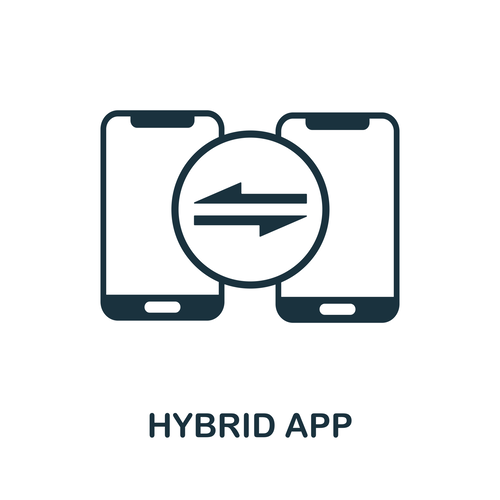Content
APIs allow open design and data access, giving banks improved flexibility and scalability. This, in turn, allows them to adapt and configure new core capabilities with ease, without impacting existing functionalities. All three of these financial services are different, yet they each provide their own distinct value.

In an interconnected environment, everyone will reap their respective benefits, provided they promptly adjust strategies. Financial services are going through a quiet but mighty revolution. Banking and payments are becoming more open source than ever before, providing access to tools and services previously locked from the public eye. On top of that, three separate metrics highlight the current shift in the market. 30% of customers are considering switching banks, 42% of customers have used a Buy Now, Pay Later service, and 2x ROAA for banks focused on BaaS offerings. These statistics are helping the introduction and representation of new banks and fintech ideas and solutions.
Why is Banking-as-a-Service useful?
Fintech is expanding and revolutionizing the way financial services operate today. Alternately, banks are collaborating with fintech firms to develop advanced financial services. Business banking is becoming easier and more efficient for startups and SMEs. LendingClub Bank, formerly Radius Bank, is a fintech company that pioneered issuing personal loans online.
- Angus Ross and Paolo Sironi discuss how BaaS and embedded finance are redefining banking as we know it and where to realize the biggest gains.
- BaaS allows businesses to pick and choose the services they need from a wide range of dedicated service providers.
- A bank as a license holder lends its license to a BaaS provider and grants access to its financial products.
- APIs allow open design and data access, giving banks improved flexibility and scalability.
- For example, offering expense cards means managing user verification, ensuring PCI compliance, understanding KYC requirements, and maintaining measures to reduce fraud.
Core banking systems should include shared capabilities for deposit, loan and credit processing and should interface with the company’s general to general accounting and reporting systems. Boasting $6.2 billion in assets and an annual combined processing volume of $232 billion, The Bancorp started as a branchless bank and is now a leader in digital financial services. The company provides private-label banking and technology solutions to non-bank businesses. It has held the number one position in prepaid card volume in the US for eight consecutive years and specializes in institutional banking and commercial lending.
What does it take to launch embedded financial products via banking as a service?
For example, companies that are not licensed banks may offer loans or payment services to customers by integrating digital banking into their systems. To make this possible, banks can either create their own platforms or work with third-party providers offering BaaS solutions. Banking as a Service describes a model in which licensed banks integrate their digital banking services directly into the products of other non-bank businesses. Banking as a Service is a platform that allows third-party companies and developers to access a financial institution’s core banking infrastructure and services via APIs . This enables them to build and offer financial products and services to their customers, such as payments, lending, and account management, without having to invest in and maintain their own banking infrastructure. Banking as a Service is a key component of open banking, which aims to increase financial transparency and innovation by providing more access to banking data and services to third parties.

Employing this BaaS platform, vendors can accept payments, track the status of their funds, as well as handle KYC and AML services. Consumers, in their turn, can deposit money with their cards or bank transfers. A travel company offers customers an online loan to pay for package deals directly through its own website. It offers its own financing using BaaS rather than redirecting customers to a separate bank.
A modern tech stack
This model then accelerates opportunities, giving the bank access to new customers. Banking as a service providers offer a range of solutions that can be integrated by either financial and non-financial organizations into their platforms. The global banking-as-a-service market size was valued at $2.41 billion in 2020, and is projected to reach $11.34 billion by 2030, growing at a Compounding Annual Growth Rate of 17.1% from 2021 to 2030.
Then, they can use that infrastructure to build their own tools, interfaces and user experiences to help their clients and streamline their own operations. Embracing the new developments in financial technology and services, the banking as a service service Banking-as-a-Service stack can be redefined in analogy to the Cloud stack. BaaS is different from open banking, which refers to the permissioned sharing of bank customer data and information in FinTech products and services.
Third-Party Provider
Veryable is a platform that connects contract laborers with work opportunities. What sets them apart is their ability to pay their contractors within 24 hours of completing a job—even on holidays and weekends. That wouldn’t be possible without partnering with a banking-as-a-service platform; in fact, Veryable had previously tried four other solutions.
Fintech wins because they sell their product to an established business for a profit. In this blog, we’ll explain exactly what BaaS is, why it’s such a huge opportunity and explore what’s required for banks to take advantage of that opportunity. As a result, the global BaaS market – already valued at USD $19.65 billion in 2021 – is expected to be worth around $74.55bn by 2030. BaaS is a service-oriented approach driven by componentized architecture. Covers the entire dealer commercial lending process delivering digitization and innovation, lowering operating costs, reducing operational risk and enabling agile operations.
Benefits of going with a payments platform
BaaS allows businesses to pick and choose the services they need from a wide range of dedicated service providers. By using APIs, businesses can easily access the parts of the banking they require allowing them to concentrate on building great products. In Banking as a Platform , the bank is providing services to its customers through a digital interface over the internet built on its own applications, servers, storage and networking. With digital BaaP, banks focus on their https://globalcloudteam.com/ core functions, which are to deliver products, services and experiences while leveraging their infrastructure, platform and scale. The goal is to gain a share of the digital banking sector with reduced development time and cost, and to provide most products and services across a single portal for the customer. Many banks, sensing the current digital trends, started offering their own BaaS platforms that enable direct access for fintechs and other businesses through APIs.
